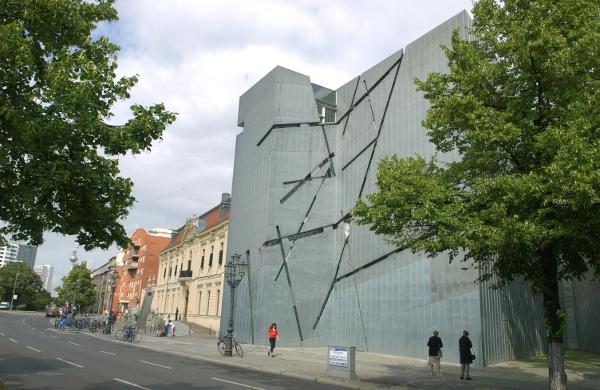Source

Source: picture-alliance / ZB (c) ZB – Fotoreport
The Berlin’s first Jewish Museum was located on Oranienburger Straße in the city’s historically Jewish neighborhood of Mitte. It opened shortly before Hitler’s rise to power in 1933 and was closed by the Gestapo in 1938, whereupon its entire collection was confiscated. In 1971, Berlin’s Jewish community celebrated its 300th anniversary with the exhibition “Achievement and Destiny” [“Leistung und Schicksal”], which was shown in the Berlin Museum (the cream-colored Baroque building seen in this photograph). At the same time, discussions began on the reestablishment of a Jewish Museum in Berlin. A sponsoring organization, the Association for a Jewish Museum in Berlin [Gesellschaft für ein Jüdisches Museum in Berlin e.V.], was founded for that purpose in 1975. At first, the association’s new acquisitions were exhibited in the Berlin Museum. In the 1980s, the association mounted various rotating exhibitions in the Martin Gropius Building [Martin-Gropius-Bau] in Berlin. In 1989, the Polish-born American architect Daniel Libeskind won the commission to build an addition to the Berlin Museum to house the collections of the Jewish Museum. The foundation stone was laid on November 9, 1992 (the 54th anniversary of Kristallnacht); work was completed in January 1999. The shape of Libeskind’s zinc-coated building is reminiscent of a broken Star of David. With his design, Liebskind aimed to create a dynamic relationship between the museum’s architecture and its program. The Libeskind Building, as the addition is now known, opened to the public in September 2001. It met with great popular and critical acclaim and attracted more than 4,000,000 visitors in its first five years.

Source: picture-alliance / ZB (c) ZB – Fotoreport